Homemade Ponzu Sauce
Ponzu is a much loved Japanese sauce appreciated for its tangy, salty, citrus profile. It’s simple to make at home and a great way to use your favorite citrus.
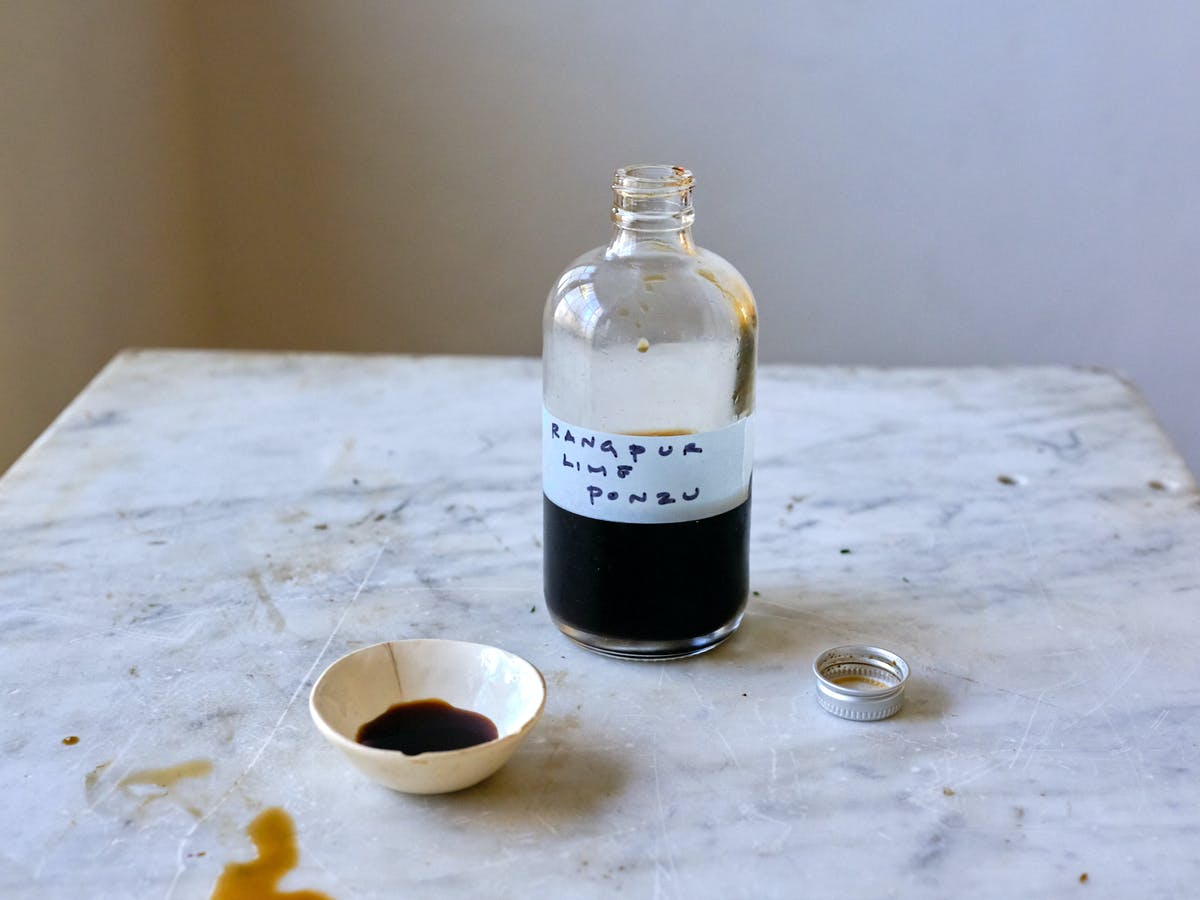
Ponzu sauce is one of the ways I like to put a dent in the steady supply of off-beat citrus growing on our patio this time of year. Ponzu is often used in Japanese (and Japanese-influenced) dishes and making your own allows for some citrus-centric experimentation. If you’re aiming to make a better version of a grocery store ponzu sauce you’ll likely hit the citrus note by using lemon, but I love to make it with Meyer lemons, yuzu, makrut lime or oro blanco grapefruit (or a blend). My favorite is ponzu sauce made with Rangpur lime. It’s a bit tangy, plenty salty, perfumed with citrus - perfect in and on so many things.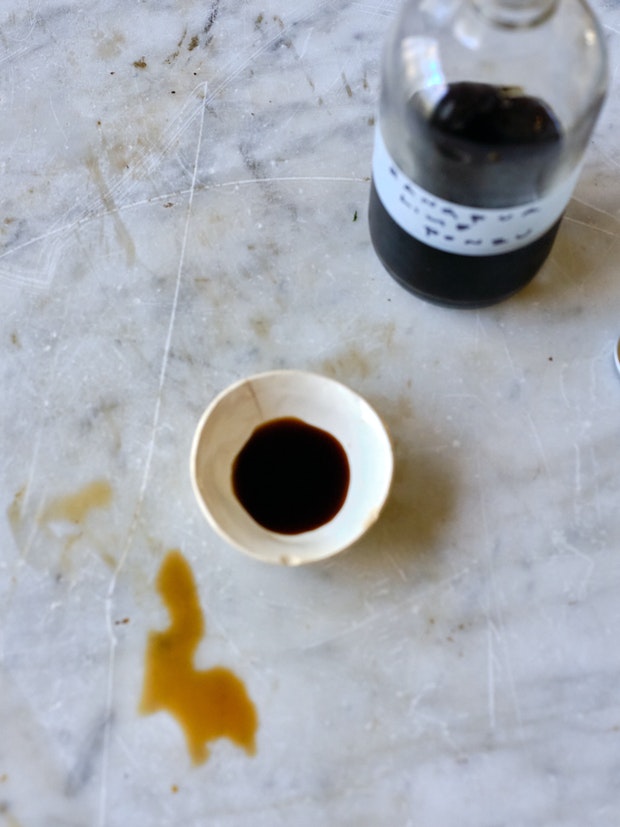
The Origins of Ponzu
This can be a bit confusing, but let’s dive it. If you want to geek out on ponzu, poke around on the internet a bit, and then read this and this. They’re the most interesting articles I’ve read about ponzu. That said, when you buy ponzu in the U.S. or see it called for in English-language cookbooks, the assumption is that ponzu is made with soy sauce, citrus, vinegar, etc. That’s the recipe on this page, but there is more to know.
According to Sceaphierde's article, ponzu was introduced by the Dutch to Nagasaki during the Edo period. Nearly every other page about ponzu will deliver a boilerplate about how the word ponzu can be broken down into two parts: pon, related to the Dutch word pons, meaning punch (the beverage); and the Japanese word su meaning vinegar. But what those pages tend to leave out is this - that ponzu was yellow (or not dark). It seems like it may have been a citrus alcohol beverage of the Dutch - no soy sauce. Over time ponzu has evolved. The ponzu you’re likely imagining, or the recipe you’re looking for, is probably more along the lines of “true” ponzu combined with soy sauce - ajipon - flavor (aji) and (pon) ponzu. Or ponzu shoyu - according to Naoko Takei Moore in her Donabe cookbook, “it’s more commonly referred to as ponzu.” That’s what we’re rolling with here.
How To Make Ponzu Sauce
I like to make ponzu using the technique I learned from Tadashi Ono and Harris Salat’s The Japanese Grill (Ten Speed Press 2011). I’ve landed on a ratio of ingredients that I’ve tweaked to my liking over the years. The version you’ll see below tends to be a bit citrus-forward, pulled back on the vinegar a shade. To make ponzu sauce you combine soy sauce, mirin, sake, citrus juice, water, kombu, and shaved bonito flakes (katsuobushi). You allow the ingredients to steep for a period of time. Then strain and bottle.
Vegetarian Ponzu Sauce
To make the vegetarian ponzu sauce we use here at home, I omit the bonito flakes and instead use dried mushrooms. Dried shiitake are the obvious choice here for their sea-forward flavor notes, but I typically reach for dried porcini mushrooms. They’re a powerhouse of flavor, umami, and I feel like they round out the ponzu nicely. Play around to see what you like!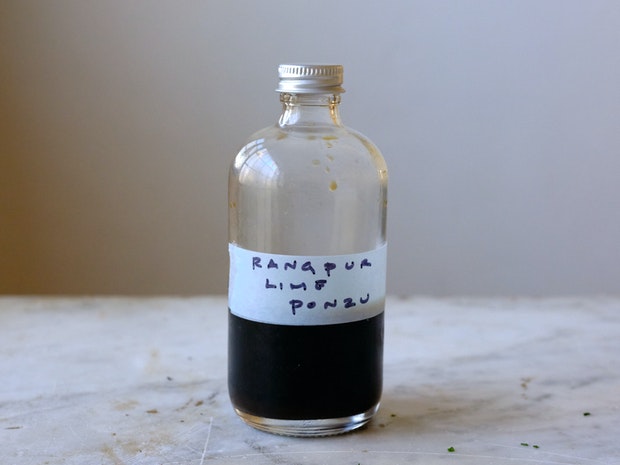
To Cook or Not?
A lot of ponzu sauce recipes you’ll see will have you cook all (or most) of the ingredients together. That’s not what you’ll see here and it’s part of what I’ve always liked about the approach Harris and Tadashi take. The only ingredients you cook together are the sake and mirin. The two ingredients cool to room temperature before they are combined with the citrus juice, vinegar, seaweed, etc. It results in a ponzu with clean lines and a directness that can be muddled with a cooked version. Imagine hot, cooked orange or lemon juice compared to freshly squeezed - they’re just different beasts altogether. So I stick with this version, not hot plus an overnight steeping. You can, of course, play around - do a gentle steeping with a warmed version, etc. Or cook everything and hold back the citrus until late. And you can, of course, experiment with how long you leave the ingredients to co-mingle. I like to go overnight.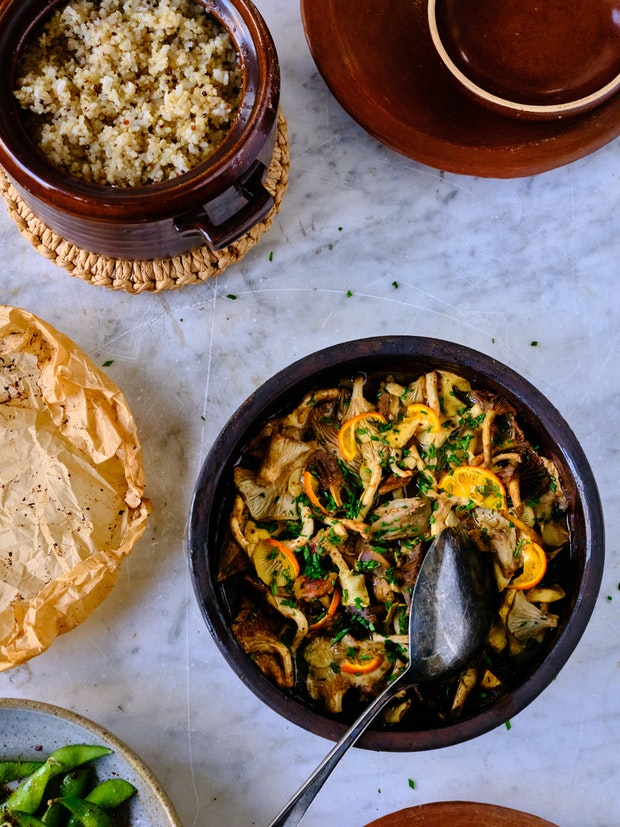
Ways to Use Ponzu
Ponzu can be used in so many dishes - imagine tart, tangy, and salt accents all at play together. It makes a great marinade for tofu and mushrooms. Splashed over noodles or rice is a no-brainer. I also love it as a component in salad dressings, skip the salt and add ponzu to taste to your favorite vinaigrette. I just used this ponzu for these Baked Mushrooms with Miso Butter (pictured above).
Ponzu Sauce
You can experiment with the type of citrus juice here. I like to have a good amount of acidity, so lemon is good. Or, if you use orange juice, split that equally with lemon juice.
- 1 tablespoon mirin
- 2 tablespoons sake
- 3 tablespoons freshly squeezed citrus juice
- 1/3 cup soy sauce
- 2 tablespoons rice vinegar
- 3 tablespoons (filtered) water
- 1 (4-inch) piece kombu
- 3 (1-inch) pieces dried mushroom (porcini or shiitake)*
-
In a small pan simmer the mirin and sake for a minute, remove from heat and cool to room temperature.
-
Combine the citrus juice, soy sauce, vinegar, water, kombu and mushrooms along with the mirin-sake mixture in a jar or container. Steep overnight.
-
Strain through a fine strainer or double layer of cheesecloth.
-
Refrigerate for up to a couple weeks.
*For a non-veg version this would be a couple tablespoons of shaved bonito flakes
Makes about 1 cup.


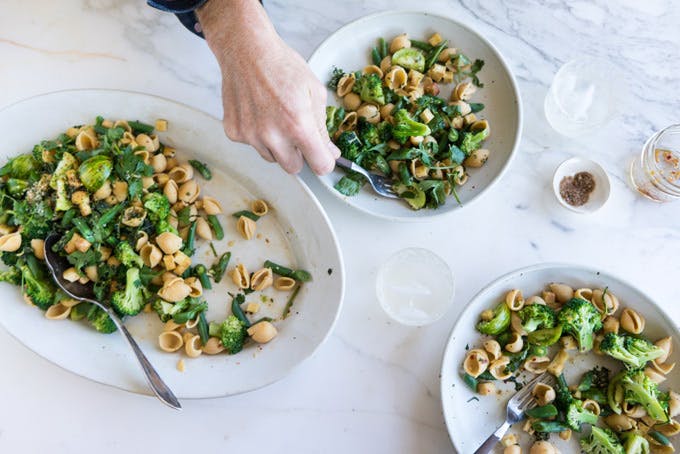
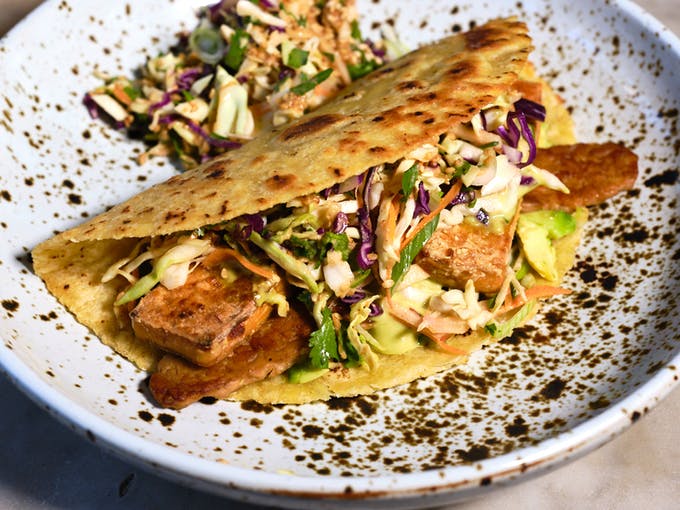
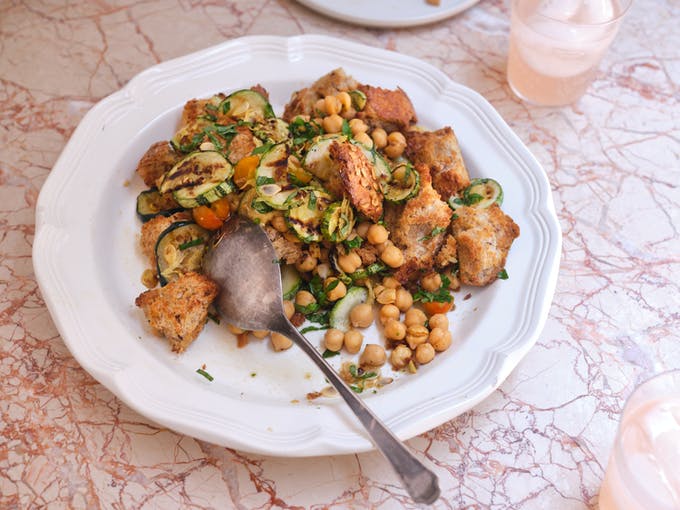
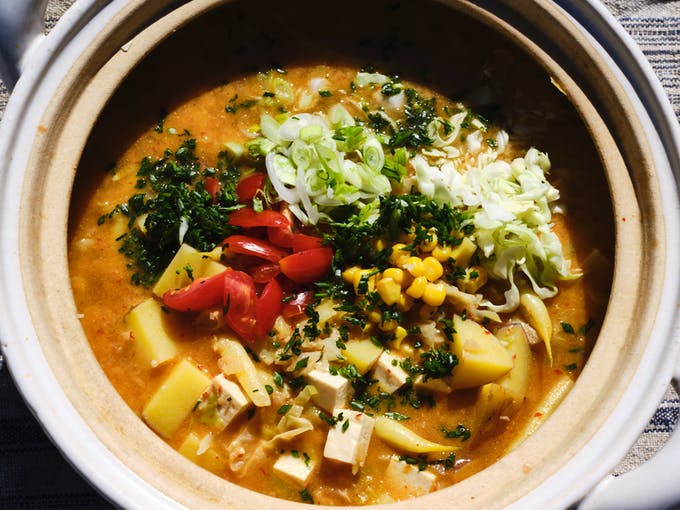
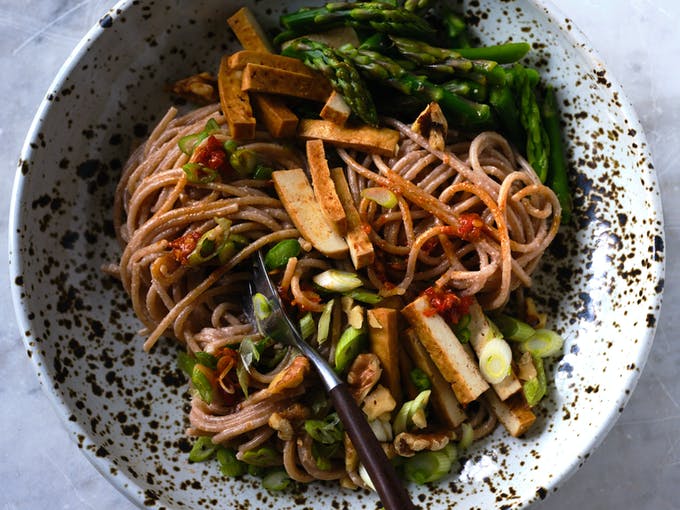
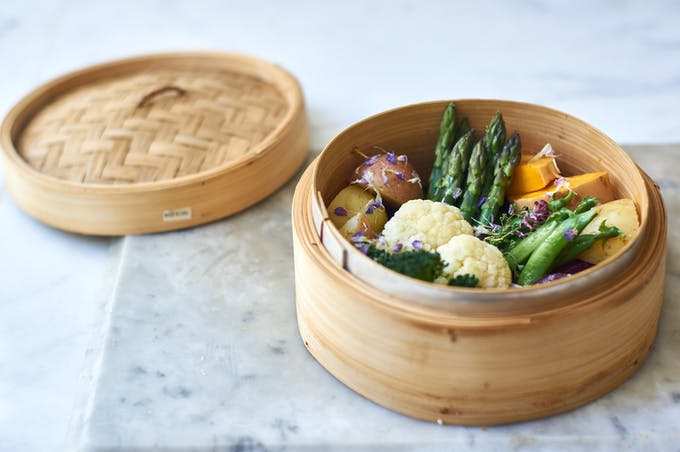

Post Your Comment
Comments
This stuff is incredible! Thank you for a remarkably easy and remarkably delicious recipe. I made some quick dashi broth in my donabe with ginger, garlic, napa cabbage, carrots, and scallions and whisked in some miso, then marinated some jammy eggs in the ponzu for a little bit. Then I put some soba noodles in a bowl, topped with the veggie broth and jammy eggs, and drizzled ponzu on top. What an easy, satisfying meal for a very cold day in Wisconsin! You are always an inspiration, Heidi; I have learned so much about flavor from you over the years.
Thanks for the kind note Jocelyn! This comment made my morning. xx!
I have a rangpur lime tree, and am always searching for new uses. Thank you.
They're the best!